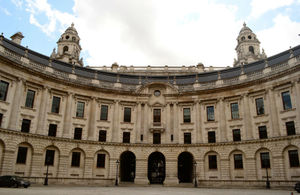New Model for English Heritage moves a step closer following consultation
拢88.5 million investment to help it stand alone

The Government today confirmed plans, announced last year, to restructure English Heritage, investing nearly 拢90 million over the next few years. A new body to manage and promote the properties and sites in the National Heritage Collection, numbering more than 400, will be set up as well as a separate one to provide expert advice and act as a champion for the sector.
Heritage Minister Ed Vaizey said:
This new model for protecting England鈥檚 heritage and promoting its precious sites and buildings gives us the best chance for more than a generation to do both. The funding will address a backlog of repairs and enable more of our heritage to be made accessible to greater numbers of visitors.
The plan, announced in June 2013, means that the properties currently run by English Heritage - including Stonehenge, parts of Hadrian鈥檚 Wall and Osborne House - will remain in public ownership, but will be managed by a charitable trust, using the same name. The Government is providing 拢80m of capital investment to restore and present the properties, creating jobs, stimulating local economies, boosting the heritage workforce and improving visitors鈥� experience at the sites. A further 拢8.5 million has been allocated to fund implementation of the new structure.
No changes are proposed to English Heritage鈥檚 duties and powers in planning and heritage protection. They will be carried out by a newly-named non-departmental public body, Historic England, dedicated to providing expert and impartial advice and championing the wider historic environment. It will strengthen its relationship with owners and promote public engagement with England鈥檚 heritage.
Ed Vaizey continued:
We will create an exciting and financially-secure future for the collection of national heritage sites and monuments that tell the story of England, ensuring they remain in public ownership as they should do. English Heritage will also get new freedoms to raise money from other sources, and act in a more commercial way.
At the same time, Historic England will provide a separate, dedicated service providing impartial advice to protect the wider historic environment, engage the public and support sustainable growth.
Last, but by no means least, the taxpayer will benefit as the need for direct government funding for the heritage collection reduces over time.
The Chairman of English Heritage, Sir Laurie Magnus, said:
We are delighted that the Government has confirmed these plans. The Government鈥檚 investment and commitment will provide firm foundations for the future success of both new organisations. The new English Heritage charity will carry out urgent conservation repairs to the National Heritage Collection and provide a better experience for visitors to those places where history happened.
Historic England will champion England鈥檚 heritage, providing expert advice, promoting constructive conservation and giving support with research, guidance and grants.
Background information
1.The Government鈥檚 intention to restructure English Heritage was first announced in the 2013 Spending Round announcement in June last year. A consultation on the plans was published in December 2013, and the results are published today.
2.English Heritage is the government鈥檚 statutory adviser on the historic environment. Its role is to help people understand, value, care for and enjoy England鈥檚 rich historic environment. Created by the National Heritage Act 1983, the following functions were conferred on English Heritage at that time to secure the preservation of ancient monuments and historic buildings, including maritime heritage; to promote the preservation and enhancement of the character and appearance of conservation areas; and to promote the public鈥檚 enjoyment of and advance their knowledge of, ancient monuments and buildings.
3.Each year more than 11 million people visit the over 400 sites and properties in English Heritage鈥檚 care. One million people enjoy the benefits of English Heritage membership, which has increased by 21per cent over the last five years.
4.English Heritage advises the Government on around 2,000 requests for listing each year, local authorities on over 14,000 planning applications affecting grade I and II* listed buildings.